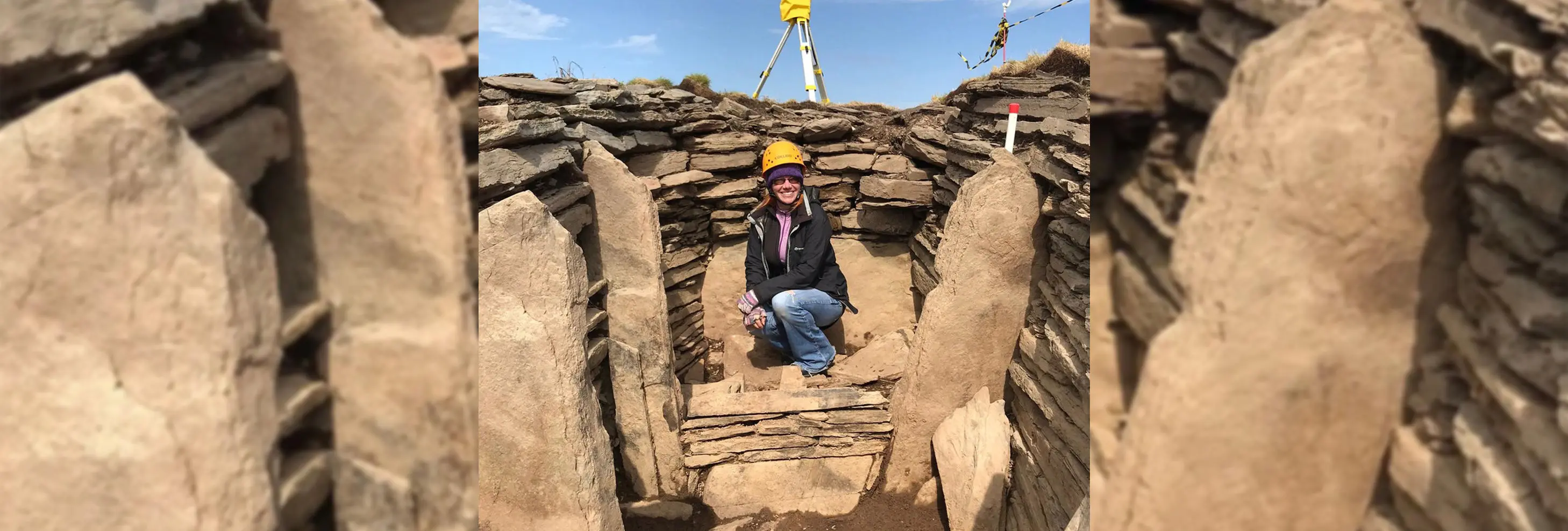UCLan’s Professor Vicki Cummings was part of the global research team
Analysis of ancient DNA from one of the best-preserved Neolithic tombs in Britain has revealed most of the people buried there were from five continuous generations of a single extended family.
By analysing DNA extracted from the bones and teeth of 35 individuals entombed at Hazleton North long cairn in the Cotswolds-Severn region, the international research team, including a University of Central Lancashire (UCLan) professor, detected 27 of them were close biological relatives.
Published in Nature, it is the first study to reveal in such detail how prehistoric families, who lived approximately 5,700 years ago around 3700-3600 BC, were structured.
The international team of archaeologists and geneticists, featuring UCLan’s Professor Vicki Cummings, say the results provide new insights into kinship and burial practices in Neolithic times and believe most of those buried in the tomb were descended from four women who all had children with the same man.
"It was wonderful to be part of an international team of archaeologists and geneticists involved in this ground-breaking study"
— Vicki Cummings, Professor of Neolithic Archaeology
The cairn at Hazleton North included two L-shaped chambered areas which were located north and south of the main ‘spine’ of the linear structure. After they had died, individuals were buried inside these two chambered areas and the research findings indicate men were generally buried with their father and brothers, suggesting descent was patrilineal with later generations buried at the tomb connected to the first generation entirely through male relatives.
While two of the daughters of the lineage who died in childhood were buried in the tomb, the complete absence of adult daughters suggests their remains were placed either in the tombs of male partners with whom they had children, or elsewhere.
Although the right to use the tomb ran through patrilineal ties, the choice of whether individuals were buried in the north or south chambered area initially depended on the first-generation woman from whom they were descended, suggesting these first-generation women were socially significant in the memories of this community.
There are also indications that ‘stepsons’ were adopted into the lineage, the researchers say - males whose mother was buried in the tomb but not their biological father, and whose mother had also had children with a male from the patriline. Additionally, the team found no evidence that another eight individuals were biological relatives of those in the family tree, which might further suggest that biological relatedness was not the only criterion for inclusion. However, three of these were women and it is possible that they could have had a partner in the tomb but either did not have any children or had daughters who reached adulthood and left the community so are absent from the tomb.
"As someone who has been researching these monuments over three decades, this study truly changes the way we understand these sites"
— Professor Vicki Cumings
Vicki Cummings, Professor of Neolithic Archaeology, said: “It was wonderful to be part of an international team of archaeologists and geneticists involved in this ground-breaking study.
“For many years, archaeologists have wondered precisely who was interred in these monuments, and now we have definitive evidence to show that it was family groups. Moreover, it provides amazingly specific details on the biological relationships between people buried at the site, and this is the kind of detail we had previously only ever dreamed of. Ancient DNA has provided us with access to this information.
“As someone who has been researching these monuments over three decades, this study truly changes the way we understand these sites.”
The project was an international collaboration between archaeologists from the universities of Newcastle, York, Exeter and UCLan, and geneticists at the University of Vienna, University of the Basque Country and Harvard University. Corinium Museum, Cirencester, provided permission to sample the remains in their collection.
The work received primary funding from a Ramón y Cajal grant from the Ministerio de Ciencia e Innovación of the Spanish Government (RYC2019-027909-I), Ikerbasque – Basque Foundation of Science, the US National Institutes of Health (grant GM100233), the John Templeton Foundation (grant 61220), a private gift from Jean-François Clin, the Allen Discovery Center program, a Paul G. Allen Frontiers Group advised program of the Paul G. Allen Family Foundation, and the Howard Hughes Medical Institute.

